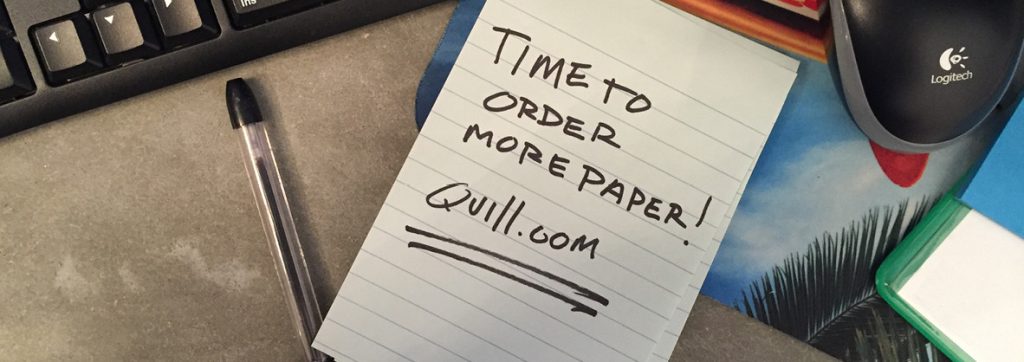Not all paper is created equal.
We know it. And if you’re here, then you know it, too. Whether you’re selecting paper for a personal project or corporate assignment, there’s a fine science when it comes to understanding the subtle nuances of paper. You may ask yourself questions you never thought existed, such as:
- What printer paper size do I need – A2 or A8?
- What paper types are available?
- What kind of attributes – weight and brightness, for example – are better suited for this job versus that job?
There’s more than meets the eye to those blank sheets of whiteness that we print things on. It all depends on your specific needs – something our Paper Buying Guide can easily and expertly help solve needs.
Like any project, it’s always a good idea to start with a few tried-and-true questions, such as:
Do you know what standard paper size you need?
 It’s important to find the right size of paper for the job. Certain everyday print jobs – such as printing letters and proposals – call for specific sizes of paper, typically 8.5” x 11” sheets. Other, not-so-ordinary projects may call for paper sizes that are either bigger or smaller.
It’s important to find the right size of paper for the job. Certain everyday print jobs – such as printing letters and proposals – call for specific sizes of paper, typically 8.5” x 11” sheets. Other, not-so-ordinary projects may call for paper sizes that are either bigger or smaller.
For instance… Are you thinking big? Like, real big? The largest of all standardized paper is A0. Now, you may not think A0 is right for the job, but it’s quite the tool of the trade when it comes to common projects, including:
- Posters (Very, very large posters)
- Blueprints and architectural drawings
- Diagrams and technical drawings
- Maps
- Newspapers
- Pretty much anything that takes multiple hands to unfold
Always remember, the bigger the paper size, the larger the price tag. And A0, while effective for certain types of projects, can be expensive. Always know the dimensions of your job before you make a trip to the printer or purchase paper.
Will it work with your printer?
 For quality purposes, know whether you’re printing with a laser or an inkjet printer. Also, consider sizing (letter vs. tabloid vs super B) and if you will need matching envelopes. You don’t want to get further into the process only to realize that you need to backtrack. That’s time – and money – that could be better spent.
For quality purposes, know whether you’re printing with a laser or an inkjet printer. Also, consider sizing (letter vs. tabloid vs super B) and if you will need matching envelopes. You don’t want to get further into the process only to realize that you need to backtrack. That’s time – and money – that could be better spent.
Does it match your professional needs?
Simply put, does the paper’s weight reel in the professional and authentic message you intend to convey? Nothing screams cheap and amateur like flimsy or see-through paper. Keep this in mind when printing business cards. You want your company to carry its own weight and feel bold and confident when you hand out business cards, or other marketing materials. For a list of which paper weight and thickness is best for the job, check out our paper weight and thickness guide.
Does your project require exact specifications for a paper type?
Sometimes a selected project requires specific paper attributes, such as weight, thickness, and brightness level (or percentage). Or, the project may need to be printed on recycled paper. While you may have never thought of these attributes as being important, our guide can help you answer your questions and, in turn, select the right paper for purchase.
The above are just a few important questions to consider when starting the paper selection and purchasing process. For more insight on the best paper for the job, check out our paper buying checklist.
Whatever your paper purchasing needs may be, we’ll help you buy like a pro. Home office or large business, let us show you the differences and offer helpful hints for purchasing the proper paper for the job.



